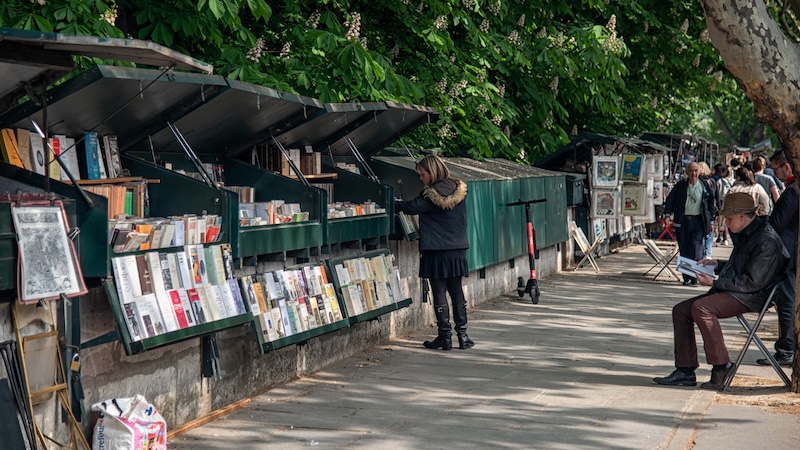Alternative Travel Destinations
Other great travel options may better fit your budget or schedule

If you love to travel but don’t have the time or money for some of the destinations on your bucket list, you can find alternative travel destinations that will please your travel bug and your lifestyle.
Is seeing the Maldives on your bucket list, but you’d rather not pay for a long-haul flight and a pricey overwater bungalow? Maybe you’ve always wanted to take a gondola ride through Venice yet dread the hordes of tourists cramming the city’s narrow streets. Or perhaps you long to explore ancient temples and sample street food in Phuket, but your packed schedule barely leaves time for a long weekend away, let alone a trip to Thailand.
Here’s the good news: You don’t have to siphon your savings, put up with crowds or plan a two-week vacation to experience the charm, culture and climate of your dream destinations. So-called travel dupes are alternate places that can deliver much of the same appeal as their more iconic — and often more expensive — counterparts. For example, with cobblestone streets, cozy cafés and a large French-speaking population, Montreal and Québec City are often cited as more-affordable alternatives to Paris — and you don’t have to leave North America.
Finding your alternative travel destinations
By understanding what draws you to your ideal location, doing some strategic research and staying open to alternatives, you can uncover viable options that will satisfy your wanderlust.
Start your research
First, identify the reasons you find your dream destination alluring. Get specific on what appeals to you most. “If Paris draws you in, think about what makes you want to go there,” advises Robyn Stencil, a tours program manager and guidebook researcher for travel company Rick Steves’ Europe. “Is it art, food, lifestyle, fashion or culture?”
Your list could include touring an iconic opera house and seeing centuries-old architecture. Or you might want to browse high-end boutiques, dine in Michelin-starred restaurants and practice the second language you learned in high school.
While millions of tourists may descend upon the same destination every year, what draws each person there isn’t always the same. The more precise you are about what you want to experience, the easier it will be to suss out a substitute.
Once you’ve sorted through your wish list of experiences, you can tap into tech to search for places that offer them. If you Google “best dupe” for your destination, the results may provide good suggestions. But you’ll have to put in some extra effort to find an alternative that truly aligns with your interests. With an internet search engine — or even assistance from artificial-intelligence tools such as ChatGPT or Perplexity — enter detailed prompts that outline your specific criteria.
“If you want to go to the Maldives because you’re looking for a great place to dive with crystal blue water and overwater bungalows to stay in, search those aspects,” says Summer Hull, editorial director at The Points Guy, a website that provides tips and tools for enhancing travel. Don’t aim to find an exact replica of your ideal destination, she advises. “Search for somewhere with the attributes you care about the most.”
When creating your search terms and prompts, you can include your dream destination as a reference. Also add in parameters such as pricing or distance constraints.
Get input from human beings, too. Reach out to well-traveled friends, family and coworkers, and describe the experience you envision. Ask for advice, and get details on their travel style. If you favor boutique hotels and they prefer major chains, you can still look into their recommendations but tailor them to fit your needs.
Online forums such as travel-related Facebook groups, Reddit threads and the Rick Steves Travel Forum, at www.ricksteves.com/travel-forum, can be rich sources of information. (While Rick Steves focuses on Europe, Stencil says many community members are avid explorers who are happy to answer questions about locations across the globe.)
Travel publications such as Afar, Travel + Leisure and Condé Nast Traveler, as well as guidebooks from established brands such as Frommer’s, Lonely Planet and Rick Steves, can also help you find promising places to add to your list of potential destinations.
Blogs, YouTube videos and social media posts can be informative, too — especially if they show candid, unfiltered photos and videos. Keep in mind that some bloggers and influencers may get free trips or be compensated in some other way to promote specific locations, so double check the reviews on those recommendations.
Look near and far
A town, city, state, region or country in close proximity to a well-known spot can occasionally have a similar appeal. “Sometimes it’s as easy as going to the next town over from the one you wanted,” says Pauline Frommer, president of Frommer’s guides and Frommer.com. “San Miguel de Allende in Mexico is probably the poster child for a picture-perfect colonial city,” she says. However, the area’s restaurants and hotels are pricey. “Instead, you can go to Guanajuato, which is an hour away, and spend 15% to 20% less on your hotel room. It’s still a gorgeous colonial city, but it’s less expensive and less crowded.”
If skiing and other snow sports are more your thing, consider visiting Snowbasin, Utah, instead of Vail, Colo. Snowbasin offers mountain vistas and powdery slopes but comes with lower lift-ticket prices and fewer fellow skiers.
For a Venetian vibe, you could head to Slovenia, which borders Italy. The Republic of Venice once ruled parts of the coastal area, and that aesthetic lingers. Inland, some medieval churches feature extraordinary murals, notes Frommer. And while not quite the same as Venice’s canals, you’ll find a picturesque winding waterway and quaint bridges in Slovenia’s capital, Ljubljana.
As you evaluate your options, however, keep in mind that not all destinations that are near each other provide similar experiences. “Don’t pick Glasgow instead of Edinburgh because they’re close enough,” Stencil says, adding that Glasgow is a bustling city while Edinburgh has a more of a Harry Potter-like fantasy feel. “Do a little research to make sure the feel and look align with what you want.”
Cast a wider net
Sometimes, the most apt travel dupe for you may be hundreds — or even thousands — of miles away from your dream area. That can mean a shorter, cheaper flight or even a road trip to get there.
For example, if your goal is to learn about — and sample — full-bodied red wines, you could opt for a tour of scenic wineries in Sonoma Valley in California instead of heading to Tuscany. If Barcelona’s architecture, art and fresh food markets appeal to you, consider Peru, which has equally compelling offerings but with lower costs for dining and lodging. Both places give you the opportunity to speak Spanish, although dialects vary, even in the same country. In Barcelona, Catalan is also commonly spoken, and Quechua and Aymara are additional languages in Peru.
While bucket-list destinations are usually popular for a region, the alternative travel destinations you find may even better, hidden gems that you will be thrilled to have experienced.
Related: Tips for Planning a Long Vacation
Laura Petrecca is a contributing writer at Kiplinger Personal Finance magazine. For more on this and similar money topics, visit Kiplinger.com.
©2025 The Kiplinger Washington Editors, Inc. Distributed by Tribune Content Agency, LLC.


